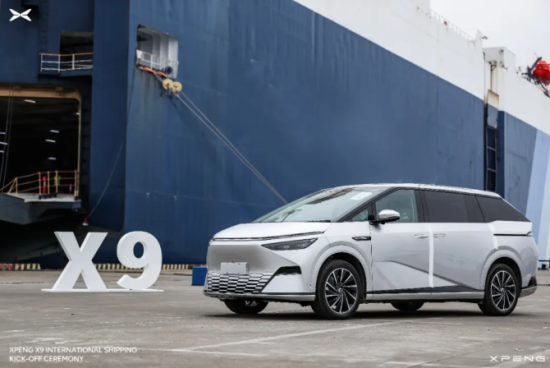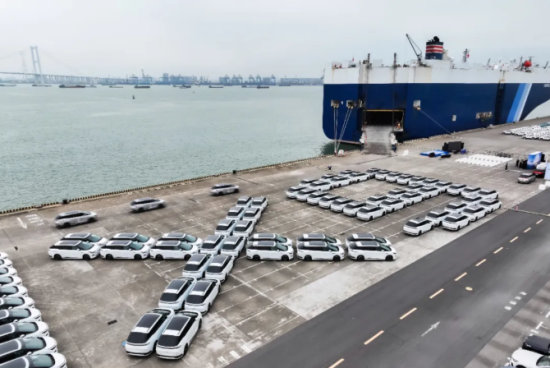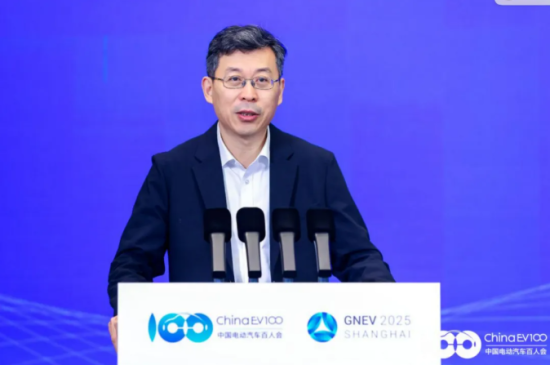After securing the top position in global auto exports, China's automotive industry is accelerating into the 'Stage 2.0' of international expansion. This new phase is characterized by moves beyond mere vehicle trade to establish overseas manufacturing plants, technology exports, and deep brand cultivation to build competitive advantages globally. On July 1st, BYD's passenger car factory in Camacari, Bahia, Brazil, rolled out its first vehicle. Earlier, on June 26, Xpeng Motors announced that its first localized production project overseas has begun in Indonesia, with the right-hand drive version of the Xpeng X9 set to start production in Jakarta in July. In May, Changan Automobile's first overseas new energy vehicle base, the Rayong factory in Thailand, commenced production of the DEEPAL S05.
Xpeng's International Business General Manager, Tang Zhikun, stated that the Indonesian project marks Xpeng's first localization initiative outside of China, building not only a complete KD (knock down) capability beyond vehicle assembly but also supporting future localizations in more markets. In 2024, Chinese auto exports are expected to reach 5.86 million units, solidifying its status as the world's largest exporter. However, simply selling cars and focusing on export data is insufficient in the long run. In the face of challenges such as rising local protectionism and trade barriers in international markets, the logic of China's automotive industry is evolving from a focus on product trade to a multidimensional approach of localized manufacturing, technology exports, and brand cultivation.
Recently, Xpeng Motors officially launched its flagship model, the Xpeng X9, in Indonesia, marking a significant step in its global strategy. As of June, Xpeng has expanded to over 40 countries and regions globally. On May 16, Changan's Rayong factory in Thailand held its production ceremony, celebrating a total global output of 28.59 million vehicles. Changan's Chairman, Zhu Huarong, stated that the goal is to exceed 5 million in global sales and 3 million in intelligent connected new energy vehicle sales by 2030. Changan is rapidly expanding its footprint outside of China, with plans for 20 overseas vehicle and KD factories, of which 9 KD factories and 1 vehicle factory are already operational.
Chery has also leveraged a decade of overseas operations to create a differentiated advantage, with over 10 assembly plants in Southeast Asia and South America. The Chery Tiggo 8 produced at its Anápolis factory in Brazil not only meets local market demand but also effectively avoids trade barriers and reduces transportation costs, creating local jobs and enhancing brand recognition. In Europe, Chery has upgraded its approach through local manufacturing in Spain and revitalizing the local brand Ebro.
BYD is also accelerating its overseas expansion, with over 470,000 units sold in international markets in the first half of the year, reflecting a 132% increase year-on-year. By 2025, BYD's overseas sales are expected to exceed 800,000 units, having established a presence in over 110 countries across six continents. The location of BYD's new factory in Camacari, Brazil, was previously a Ford plant, which will soon shift to producing electric vehicles. Plans are in place for BYD's factory in Szeged, Hungary, to be operational by the end of 2025, producing 12 models focused on mid-range electric and plug-in hybrid vehicles. Great Wall Motors is also set to begin production at its Brazilian factory by mid-2025, which will serve both domestic demand for new energy vehicles and function as its fourth-largest global production base, with a three-year capacity of 50,000 units.
For Chinese automakers to achieve sustainable growth on the international stage, it is essential not only to establish factories abroad and integrate with local economies but also to maintain and build a strong brand image. Among the new car manufacturers, Xpeng prioritizes 'brand first' as the core of its Stage 2.0 strategy. Tang Zhikun emphasized that Xpeng focuses on establishing brand and user service capabilities as top priorities, ranking above sales metrics internally.
Xpeng has positioned itself as a 'technology company' entering Europe, where it currently leads sales among Chinese brands for pure electric models priced over 40,000 euros. Tang mentioned that starting in Northern Europe and expanding into Germany, France, Southern Europe, and Southeast Asia has helped build better brand recognition. Xpeng's products are recognized as mid-to-high-end in Europe, comparing favorably against Tesla and other premium brands.
Navigating the challenges of globalization, the Chinese automotive industry's internationalization is filled with both opportunities and challenges. According to Zhang Yongwei, Vice Chairman and Secretary-General of the China Electric Vehicle 100 People’s Meeting, the successful paths of the past no longer apply to the new development environment. He noted that the traditional global cooperation model is facing bottlenecks, with increasing barriers to vehicle sales and an expansion of those barriers along the supply chain due to geopolitical and technological complexities.
The Chief Representative and General Manager of the German Automotive Industry Association in China, Zhang Lin, highlighted significant differences between compliance issues in Europe and those domestically, emphasizing the importance of aligning regulations for long-term operations and local employee cultural integration.
Xpeng's smart driving capabilities are currently limited due to varying regulations across EU and ASEAN markets, but the company is actively working with local governments to promote regulatory openness and conducting extensive testing in Germany, the Middle East, and Hong Kong to prepare for rapid establishment of a leading advantage once regulations ease. Vice President of Guoxuan High-Tech, Xiong Yonghua, stated that during the overseas expansion process, there are opportunities amidst policy challenges, with hopes to establish a complete ecosystem from raw materials to recycling in every region.
Zhang Yongwei proposed four new pathways to enhance China's automotive export model: linking new Chinese models and incremental supply chains with the global automotive industry; promoting Chinese auto parts and service systems globally; facilitating close connections between overseas parts companies and Chinese industrial chains; and focusing on changes in multinational companies' localization in China and their global extensions.
Data shows that from January to May 2025, China's automotive exports reached 2.83 million units, a year-on-year growth of 16%. At the GNEV2025 forum, Sun Xiaohong, Secretary-General of the Automotive Internationalization Professional Committee of the China Chamber of Commerce for Import and Export of Mechanical and Electrical Products, projected that with a 10% growth rate, this year's automotive exports could reach 7 million units, with a hopeful target of nearly 10 million by 2030, including overseas production. In terms of parts (excluding power batteries), with a projected annual growth of 5%, exports could easily reach $120 billion by 2030. As the target of 10 million exports approaches in 2030, Chinese automakers are vying for rule-making authority in the global automotive industry's transformation through a combination strategy of localized manufacturing, standardized technology, and premium branding. The transition from an 'export powerhouse' to a 'system exporter' will be essential for the global development of China's automotive industry.
Chinese Auto Exports Enter Stage 2.0 with Global Manufacturing and Brand Localization

Images



Share this post on: